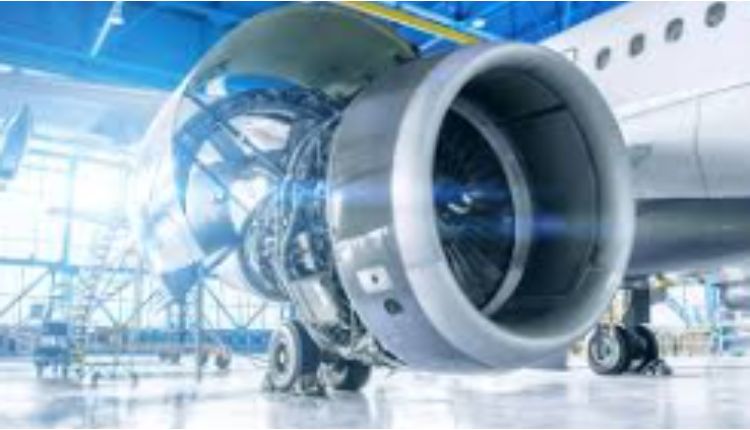
Aircraft
Aircraft safety is critical because it protects the lives of passengers and crew members as well as the aircraft’s structural integrity. Calibrating is one of the most important procedures for keeping this safety intact. Calibration is the process of tuning and calibrating several aircraft instruments and systems such that they operate with dependability and precision. Calibrating instruments is simply one component; it affects everything from flight controls to safety equipment, making it a cornerstone of aviation safety requirements.
The Role of Calibration in Ensuring Accuracy and Precision
Calibration is critical for ensuring that every piece of equipment in an airplane operates within its authorized specifications. Designed to provide critical information, such as speed, altitude, fuel levels, engine performance, aircraft instrumentation, and sensors. If any of these equipment fails or produces incorrect data, a chain of errors can occur, jeopardizing the aircraft’s operation. An incorrectly calibrated altimeter, can display the incorrect height, resulting in potential accidents with other aircraft or risky landings. Frequent instrument calibration ensures that these systems remain accurate and perform as intended in all operating conditions, decreasing the flying risk of errors.
Ensuring Proper Functioning of Flight Control Systems
The flight control systems of an aircraft are in charge of directing, stabilizing, and controlling the plane during flight. These systems function due to feedback from a variety of sensors and control surfaces, including as the rudder, ailerons, and elevator. Correct calibration of these components ensures that the pilot’s commands result in precise and responsive aircraft motions. Any miscalibration in flight control systems can result in unexpected behavior, difficult maneuvering, or even total loss of control in severe conditions. Regular calibration of these devices helps to maintain control movement precision, allowing pilots to safely navigate the aircraft under a variety of flight conditions.
Maintaining Structural Integrity Through Calibration
During flight, aircraft are subjected to extreme stress, which can have long-term consequences for structural components. Monitoring and modifying systems that gauge the load, stress, and mechanical characteristics of the aircraft depends on calibration. Load sensors and strain gauges are among this equipment; they need to be calibrated to guarantee they give reliable readings regarding the forces operating on the aircraft’s structure.
Incorrect readings could cause overloading or undetectable structural damage, therefore endangering the safety of the aircraft. Calibration of these systems guarantees that the aircraft can resist the mechanical stresses of flight without suffering undetectable damage. Frequent calibration checks enable early structural flaws in the aircraft to be found, therefore enabling prompt repairs and guaranteeing the general lifetime and safety of the aircraft.
Impact of Calibration on Aircraft Tire Performance
Aircraft tire calibration is another crucial factor that influences safety. Extreme conditions, including high speeds during takeoff and landing, huge loads, and temperature variations surround aircraft tires. Correct tire inflation depends on the tire pressure monitoring systems (TPMS) being calibrated. Reduced performance, too much wear, or even tire failure during flight can all result from improper tire pressure. Calibration of these monitoring systems guarantees that tire pressures are kept within the advised limits, therefore lowering the risk of tire-related events.
Apart from tire pressure, other elements like tread depth and wear patterns have to be under strict observation. Buying high quality Michelin aircraft tires from reputable suppliers guarantees that, when correctly calibrated, the tires satisfy safety criteria and perform as expected. When matched with precise calibration, such premium tires provide the required traction, stability, and safety for airplane operations.
Preventing Safety Hazards Through Regular Calibration
Aircraft go through a number of tests and inspections, with calibration playing a critical role in identifying and preventing potential safety issues. Calibration tests enable the identification of any aircraft system drift that can cause faults or inaccuracies. Many times, these checks are carried out in concert with other safety inspections, including structural integrity checks, fuel system assessments, and engine performance testing. Regular calibration of all systems helps to detect possible problems early on, therefore preventing more major, safety-threatening ones from developing.
Conclusion
Calibration is an essential step in the aviation sector, as it directly influences aircraft safety. Whether it relates to flight control systems, avionics, tire performance, or structural integrity, correct calibration guarantees that every instrument and system is operating with dependability and correctness. Maintaining passenger, crew, and aircraft safety depends on meticulous attention to detail and preventing mistakes. Calibration is an ongoing procedure that cannot be neglected, considering the complexity and accuracy needed in aviation. Regular calibration of avionics, instrumentation, and other crucial equipment helps aircraft to run safely under many conditions, therefore giving confidence to all those on board.
Sources:
https://allometrics.com/why-calibration-is-a-priority-for-the-aviation-industry/
https://calibrationselect.co.uk/blog/the-critical-role-torque-calibration-plays-in-aviation-safety/
https://www.fluke.com/en-us/learn/blog/calibration/why-is-calibration-important





